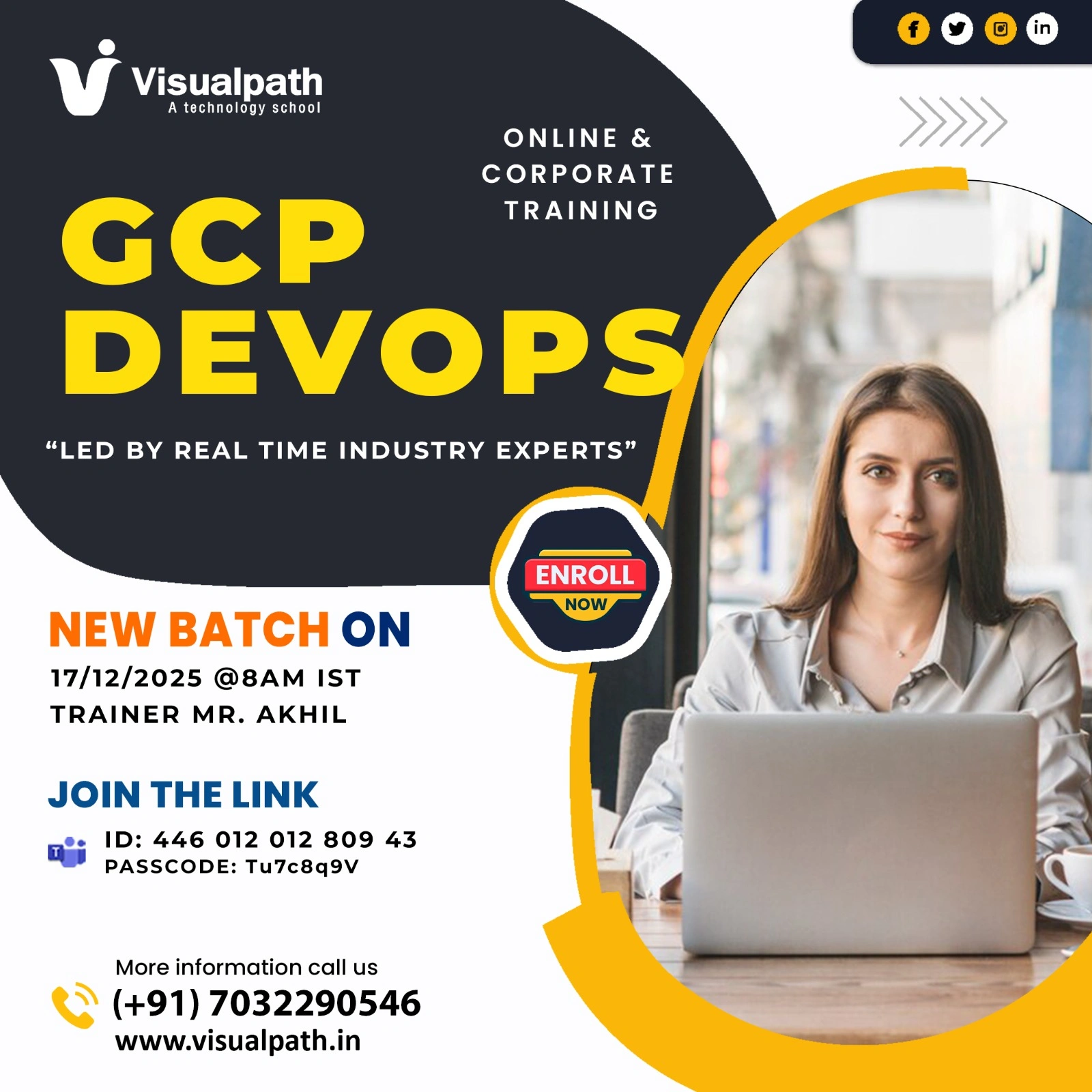GCP DevOps Training Overview
With organizations adopting cloud-native DevOps, professionals with expertise in GCP DevOps are in high demand.
This course covers Google Cloud DevOps tools, including Cloud Build, Kubernetes Engine, Cloud
Deployment Manager, Terraform, and Stackdriver Monitoring. You will learn to build, deploy, and
manage cloud applications efficiently while ensuring security and compliance.
Key Highlights of the Training Program
- DevOps Best Practices in GCP: Learn industry-standard DevOps practices and their
implementation in Google Cloud.
- CI/CD Pipeline with Cloud Build: This pipeline automates software delivery using Cloud
Build, Cloud Source Repositories, and Cloud Functions.
- Infrastructure as Code (IaC) with Terraform and Deployment Manager: Automate infrastructure
provisioning using Terraform and Cloud Deployment Manager.
- Containerization with Kubernetes: Deploy and manage scalable applications using Google
Kubernetes Engine (GKE).
- Monitoring and Logging with Stackdriver: Gain expertise in monitoring applications with
Cloud Monitoring, Logging, and Tracing.
- Security and Compliance in DevOps: Implement security best practices using IAM, Cloud
Security Scanner, and DevSecOps principles.
Why Choose Our GCP DevOps Training
- Comprehensive Curriculum: Covers everything from CI/CD, Kubernetes, security, and cloud
automation.
- Hands-On Training: Get practical experience with Google Cloud services and DevOps tools.
- Expert Trainers: Learn from certified DevOps professionals with industry experience.
- Certification Preparation: Get guidance to clear the Google Professional DevOps Engineer
Certification.
- Flexible Learning: Access 100 percent online training at your convenience.
Why Choose Visualpath?
- Industry-Leading Training: Learn from experts with real-world experience in GCP DevOps and
cloud automation.
- Proven Track Record: Thousands of professionals have successfully trained with us and
secured high-paying jobs.
- 24/7 Support: Get continuous assistance from our support team throughout your learning
journey.
- Affordable Pricing: High-quality training at competitive prices with flexible payment
options.
Get Started Today
Visualpath offers industry-leading GCP DevOps
Certification Online Training with expert guidance and practical learning.We are
available globally, allowing professionals from anywhere to enroll and accelerate their careers.


